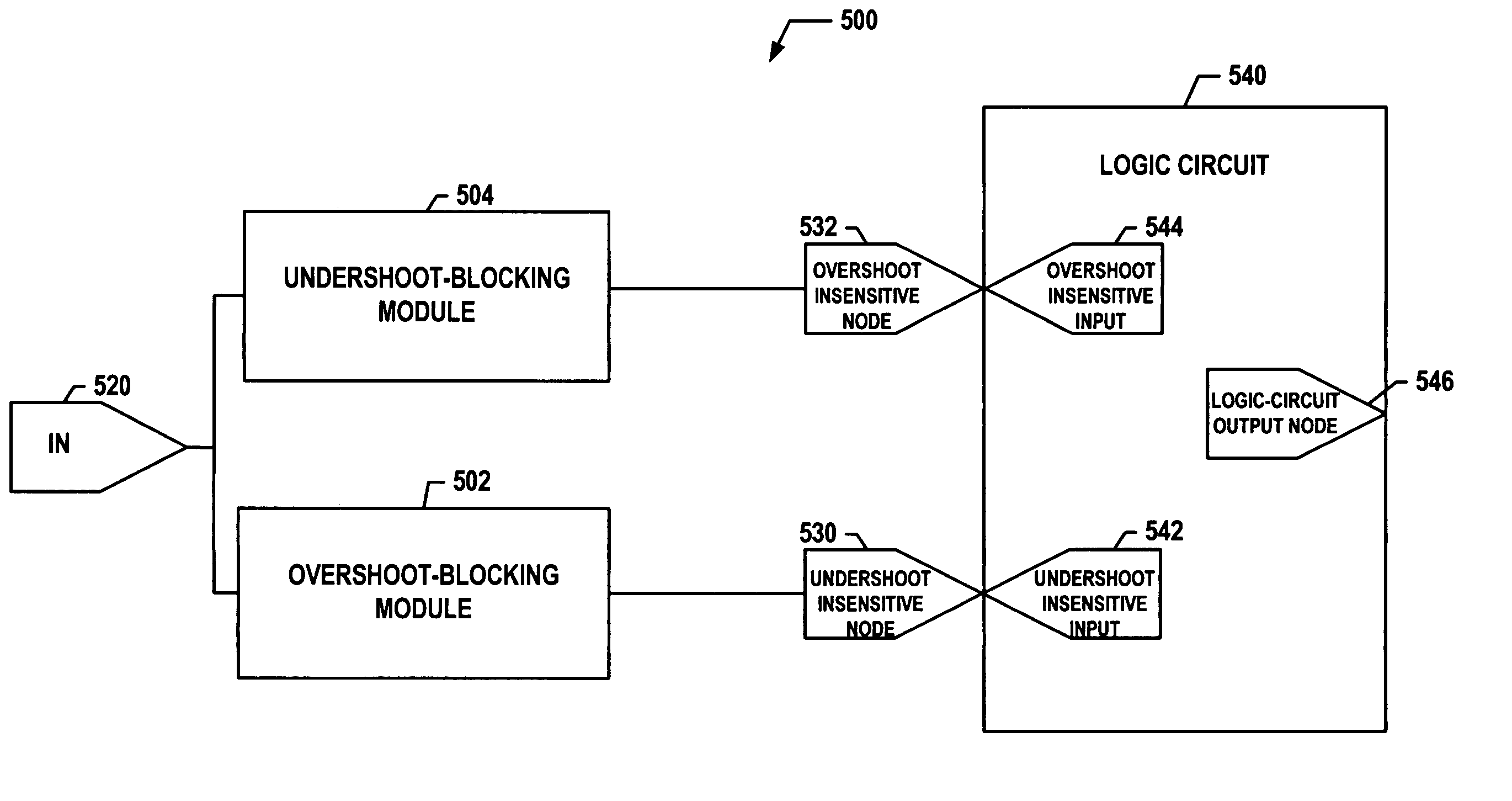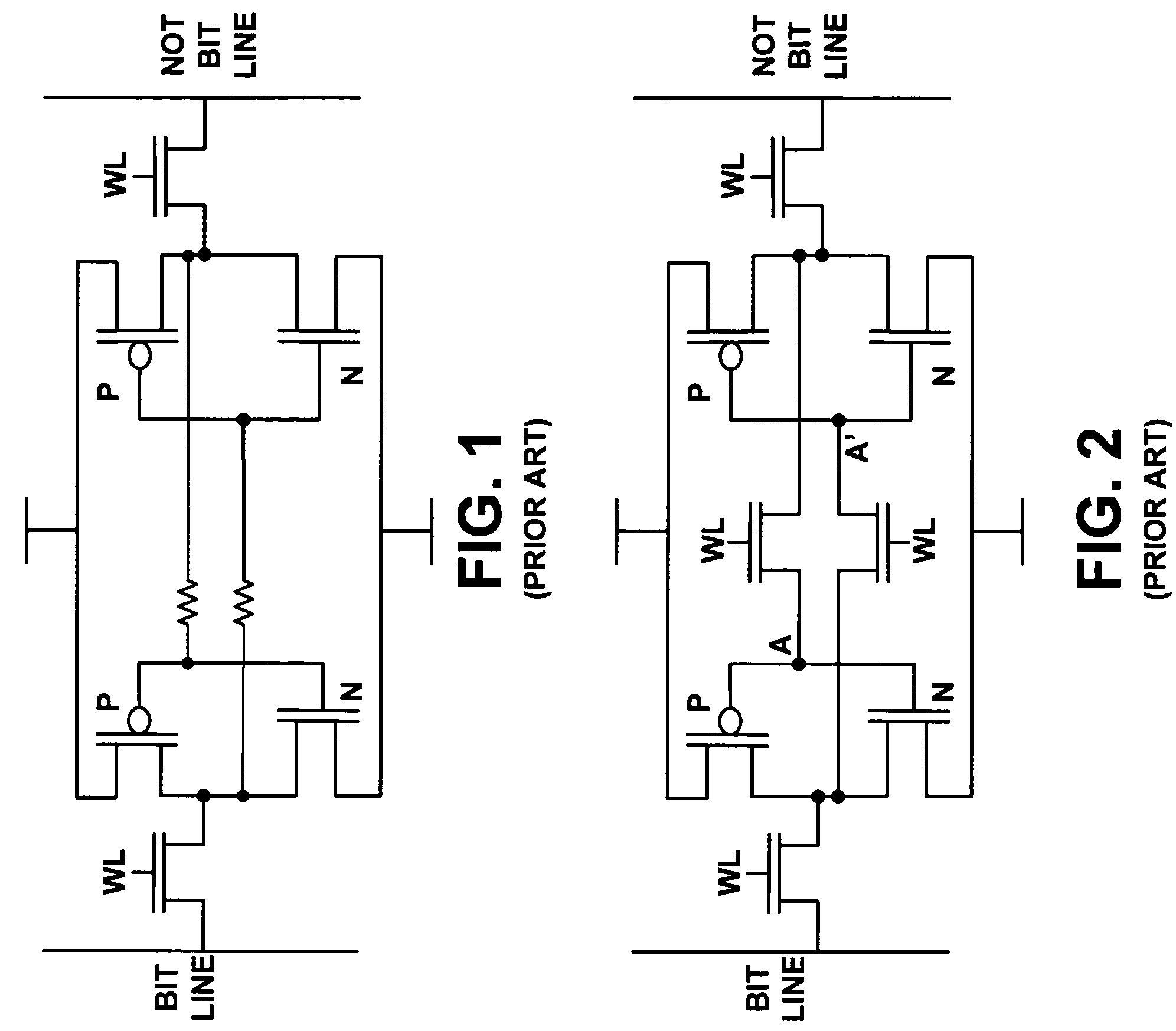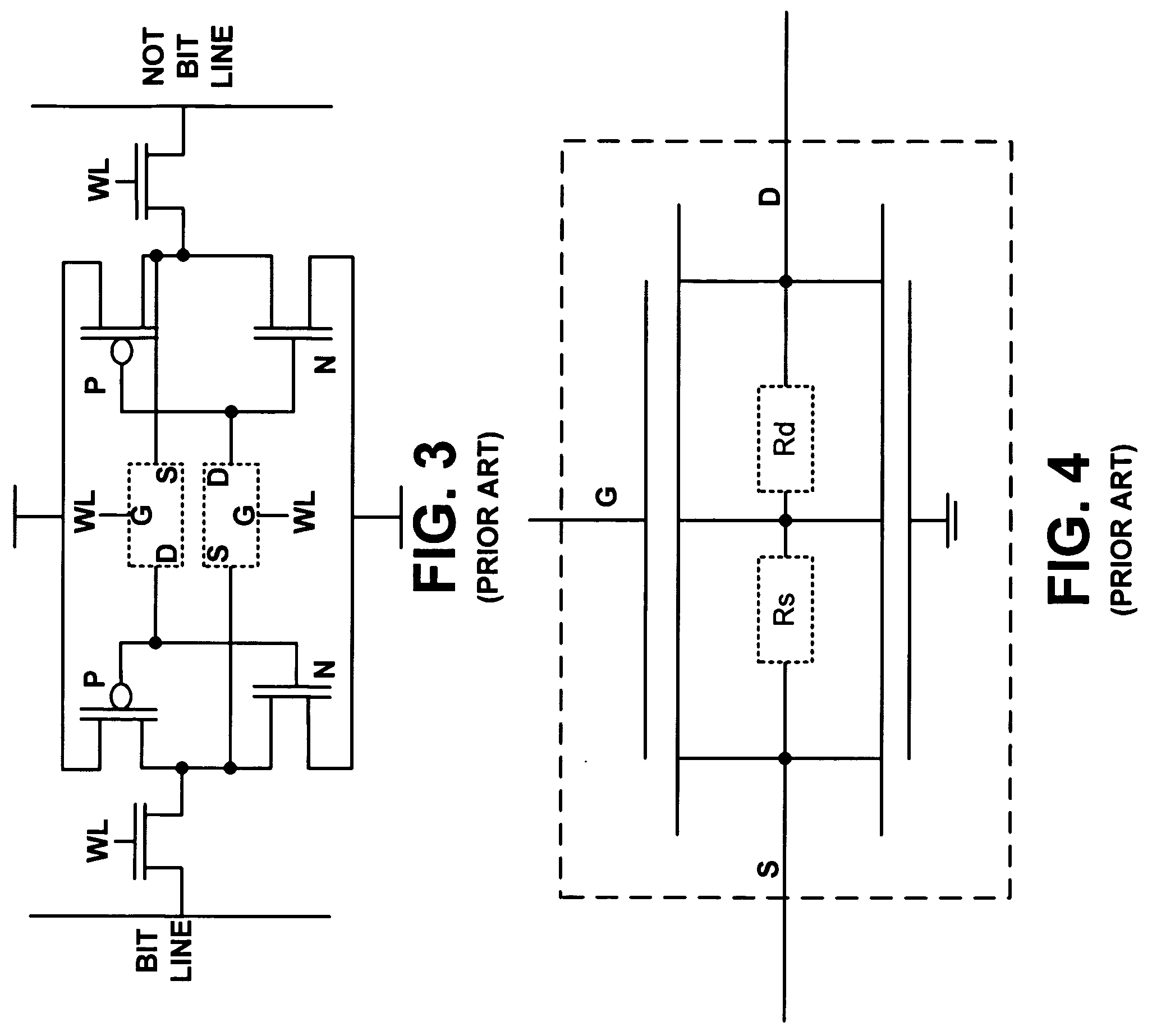Single event upset hardened circuitry without sensitivity to overshoot and/or undershoot conditions
a single event and hardened circuit technology, applied in logic circuits, pulse techniques, reliability increasing modifications, etc., can solve the problems of affecting the use of integrated circuits by terrestrial-based devices, affecting affecting the use of integrated circuits. , to achieve the effect of preventing the propagation of overshoot and undershoot conditions, preventing further propagation of overshoot conditions, and preventing undershoot conditions
- Summary
- Abstract
- Description
- Claims
- Application Information
AI Technical Summary
Benefits of technology
Problems solved by technology
Method used
Image
Examples
Embodiment Construction
[0041]FIG. 5 is a block diagram illustrating an SEU hardening circuit 500 that provides immunity to voltage overshoot and / or undershoot conditions. The SEU hardening circuit 500 (or multiples thereof) may be placed between a first and second stage of a larger integrated or integral system.
[0042]As noted above, voltage overshoot and undershoot conditions may occur in integrated circuits due to radiation particles striking one or more “PN” junction regions of such integrated circuits. An overshoot condition can result from a radiation-particle strike that causes a voltage level on a node of the integrated circuit to exceed a nominal power voltage (e.g., a nominal VDD or a logic-1 level). Conversely, an undershoot condition can result from a radiation-particle strike that causes a voltage level on a node of the integrated circuit to fall below a nominal ground voltage (e.g., nominal VSS, Ground or a logic-0 level).
[0043]To provide immunity against such voltage overshoot and / or undersho...
PUM
 Login to View More
Login to View More Abstract
Description
Claims
Application Information
 Login to View More
Login to View More - R&D
- Intellectual Property
- Life Sciences
- Materials
- Tech Scout
- Unparalleled Data Quality
- Higher Quality Content
- 60% Fewer Hallucinations
Browse by: Latest US Patents, China's latest patents, Technical Efficacy Thesaurus, Application Domain, Technology Topic, Popular Technical Reports.
© 2025 PatSnap. All rights reserved.Legal|Privacy policy|Modern Slavery Act Transparency Statement|Sitemap|About US| Contact US: help@patsnap.com



